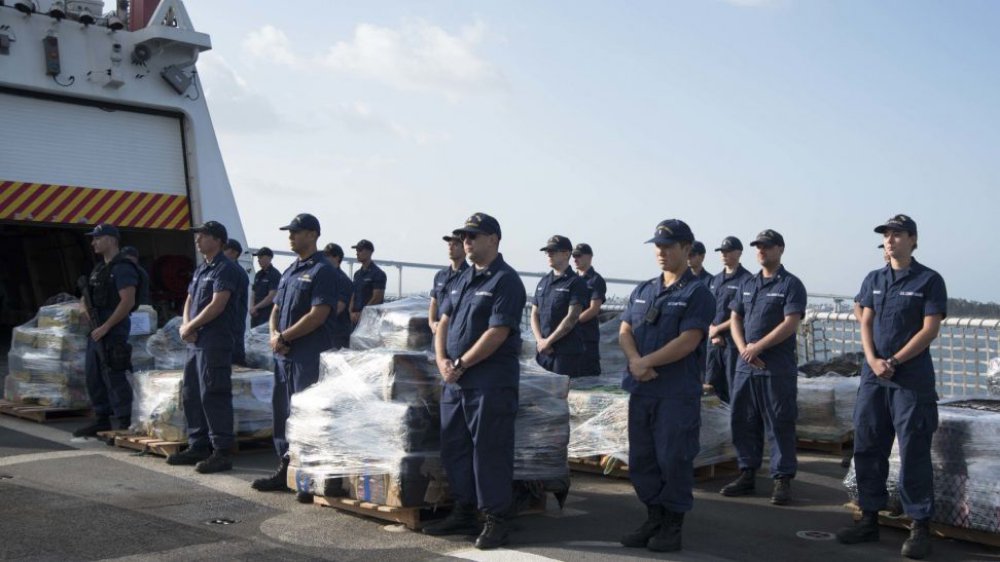Unmanned aircraft do not have a long, storied history like the Coast Guard. But they already play a role in one of the Coast Guard’s earliest missions – guarding against illicit trade.
In a letter to the commanding officers of the Revenue Cutter Service dated June 4, 1791, 10 months after the service was founded, Alexander Hamilton warned of the resourcefulness of traffickers, “unlading Goods before the arrival of a Vessel into Port,” and advised vigilance in stopping all fraudulent practices. Today’s Coast Guard faces a much more resourceful criminal: transnational organizations with vast resources that run illicit drug and human smuggling operations.
The Coast Guard is working to add unmanned aircraft systems to augment its fleet of cutters and rotary-wing aircraft, including the acquisition of small UAS (sUAS) capabilities for its national security cutter fleet. The first installed sUAS, on National Security CutterStratton, assisted with the interdiction or disruption of four go-fast boats carrying 5,000 pounds of contraband on its inaugural deployment. A request for proposal for sUAS capability to outfit the full NSC fleet is planned for release by the end of this fiscal year.
The effort to utilize land-based, long-range UAS is still in its infancy. The Coast Guard has provided pilots and sensor operators to fly the Customs and Border Protections MQ-9 Guardian UAS since 2008, guarding our nation’s southern borders and approaches with these highly capable machines. Additionally, the Research and Development Center (RDC) plans to release a request for information to conduct market research on long-range/ultra-long endurance land-based UAS. This research will investigate the feasibility, costs and benefits of using these systems to conduct intelligence, surveillance and reconnaissance missions in the area through which most contraband passes on its way to the United States from South America. This transit zone includes the Caribbean Sea, Gulf of Mexico and the eastern Pacific Ocean, and covers more than 7 million square miles – roughly twice the size of the continental United States.
Finally, the Office of Aviation Forces is currently contracting for an sUAS proof of concept deployment from Puerto Rico later this year, supporting local law enforcement efforts and demonstrating the functionality and tactical capabilities of the current cutter-based UAS in a shore-based capacity.
In addition to border security and drug interdiction, UAS capability has the potential to enhance many of the Coast Guard’s other missions, including search and rescue, marine environmental protection, aids to navigation and ice operations. In the recently completed Arctic Technology Evaluation aboard Coast Guard Cutter Healy, for example, the RDC tested the capabilities of a short-range UAS for polar missions such as buoy location checks, ice conditions scouting and oil spill cleanup guidance.
Hamilton’s letter directed the early Revenue Cutter Service commanding officers to “keep a very careful eye upon the motions of coasting Vessels” and warned, “To fix yourself constantly or even generally at one position would in a great measure defeat the purpose of the establishment.” The Coast Guard’s UAS work has the potential to extend its watch by thousands of miles, sending a careful, moving eye to help catch international criminals and keep people and waterways safe.
Photo: The crew of the U.S. Coast Guard Cutter Stratton offloaded six tons of cocaine in San Diego, March 31, 2017
Source: The Maritime Executive


Excellent Hamilton references!!